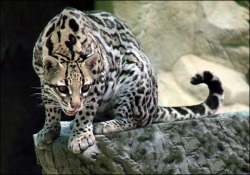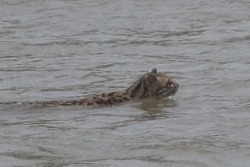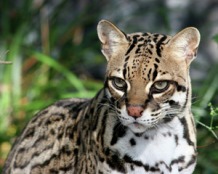Ocelot
The Leopardus pardalis
EndangerEd or In danger?

The scientific name for an ocelot is: Leopardus pardalis. The classification for an ocelot is:
Kingdom: Animalia
Phylum: Chordata
Class: Mammalia
Order: Carnivora
Family: Felidae
Genus: Leopardus
Species: pardalis
Kingdom: Animalia
Phylum: Chordata
Class: Mammalia
Order: Carnivora
Family: Felidae
Genus: Leopardus
Species: pardalis
Extraordinary Trait of an Ocelot

Physical Description

The ocelot looks a lot like a margay. It's body is covered with a sand yellow or warm brown fur coat with black or brown rosettes, spots, and they also have cheek spots. Some can be melanistic. The male leopardus pardalis's weight averages around 22-26 lbs. (10-12 kg). A female is around 19.5-20.75 lbs. (8.8-9.4 kg). The average sizes of an ocelot are 0.5-1m for the head and body, 0.5m for shoulder height, and the tail is 20-25 cm long.
Ocelots, like most cats, have retractable claws. The reason for this is because when catching prey, they can have their claws sharp to hold onto it. Their large eyes are very keen and made for night vision, which is an adaption for hunting in the night. Ocelots also have short, but excellent ears.
Ocelots, like most cats, have retractable claws. The reason for this is because when catching prey, they can have their claws sharp to hold onto it. Their large eyes are very keen and made for night vision, which is an adaption for hunting in the night. Ocelots also have short, but excellent ears.
